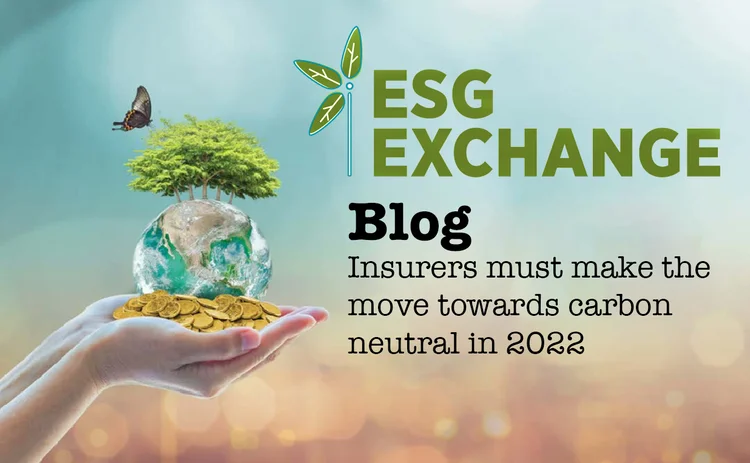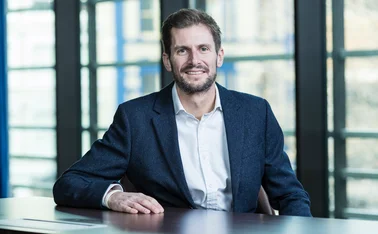
ESG Blog: Insurers must make the move towards carbon neutral in 2022

The COP26 conference has prompted the insurance industry to look more closely at its carbon footprint and explore ways to reduce emissions. But are those in the insurance sector really committed to making tangible changes to become carbon neutral, or is it just a case of ‘all talk and no action’, asks Andrew Bussey, director at Smithers Purslow.
The process to move to carbon neutral in 2022 can take well over a year to get in place. The first step is for a chartered environmentalist to start an internal audit to calculate the firm’s carbon footprint, and then recommend ways to reduce and offset emissions.
An environmentalist can advise clients on sustainable design and construction. Many companies are also already environmentally aware, and achieving something like the ISO 14001 Environmental Management accreditation can be a step towards carbon neutral.
Environmental priorities
A top priority can be to assess areas where energy consumption changes can easily be made, such as in premises, working practices and company vehicles. Simple fixes like ensuring that all windows and doors have draught excluders, turning heating thermostats down and removing water coolers, and their unnecessary use of plastic and transportation, can deliver quick wins.
The recent move towards a virtually paperless environment, with more remote working and less reliance on desk space and office utilities, plus company cars making their move towards using an alternative fuel sources, can also help
The recent move towards a virtually paperless environment, with more remote working and less reliance on desk space and office utilities, plus company cars making their move towards using an alternative fuel sources, can also help. Where insurers have serviced offices in older buildings with inefficient energy consumption, as leases expire, staff should try to relocate to modern offices with more controllable and sustainable energy usage.
Of course, there are areas where it is not possible to be carbon neutral, as technical employees have to undertake site visits and, although they encouraged to avoid using their cars and use public transport where possible, they’ll still leave a footprint. But in some cases this can be offset.
Call for change
Across the market, some key players are dragging their heels, but policyholders are looking for insurers to instigate change. Customers still want first-class customer care, but they appreciate that in some circumstances remote site meetings are suitable and insurers should encourage this approach.
Equally, salvaging damaged items for restoration and reuse in repairs could become the norm rather than reverting to ‘new for old’. Insurers could also, with property repairs allow sensible efficiency upgrades to the building fabric, even though they’re not obliged to under regulations and policy terms.
With insurers at the top of the food chain, if they start being more proactive in reducing their carbon footprint and policy approach, then others will follow suit
These are just a few examples where change can be made, and with insurers at the top of the food chain, if they start being more proactive in reducing their carbon footprint and policy approach, then others will follow suit.
While every business and person has a part to play in tackling climate change (as an independent practice, SP has the freedom to act with relative ease), the real change will come when insurers revise their policy wordings, so they are when resolving claims, they are also considering their impact on the environment.

Post’s ESG Exchange
This article is part of Post’s ESG Exchange from 7 to 18 March featuring free to access webinars, blogs and interviews focusing on ESG.
Today ESG is a powerful tool in the insurance industry, presenting both risks and opportunities for businesses. Register now to watch any of the ESG focused webinars, and have the opportunity to explore and read future content online.
- What do SMART environmental goals look like for the insurance industry?
- Implementing ESG practices across the insurance supply chain.
- What are some of the challenges in creating a more diverse workforce?
- Which area of business should you focus on first in implementing the ESG Agenda
- Will ESG reputation end up being one of the top attractions for insurers in terms of investments?
To register, please click here
Only users who have a paid subscription or are part of a corporate subscription are able to print or copy content.
To access these options, along with all other subscription benefits, please contact info@postonline.co.uk or view our subscription options here: https://subscriptions.postonline.co.uk/subscribe
You are currently unable to print this content. Please contact info@postonline.co.uk to find out more.
You are currently unable to copy this content. Please contact info@postonline.co.uk to find out more.
Copyright Infopro Digital Limited. All rights reserved.
As outlined in our terms and conditions, https://www.infopro-digital.com/terms-and-conditions/subscriptions/ (point 2.4), printing is limited to a single copy.
If you would like to purchase additional rights please email info@postonline.co.uk
Copyright Infopro Digital Limited. All rights reserved.
You may share this content using our article tools. As outlined in our terms and conditions, https://www.infopro-digital.com/terms-and-conditions/subscriptions/ (clause 2.4), an Authorised User may only make one copy of the materials for their own personal use. You must also comply with the restrictions in clause 2.5.
If you would like to purchase additional rights please email info@postonline.co.uk







